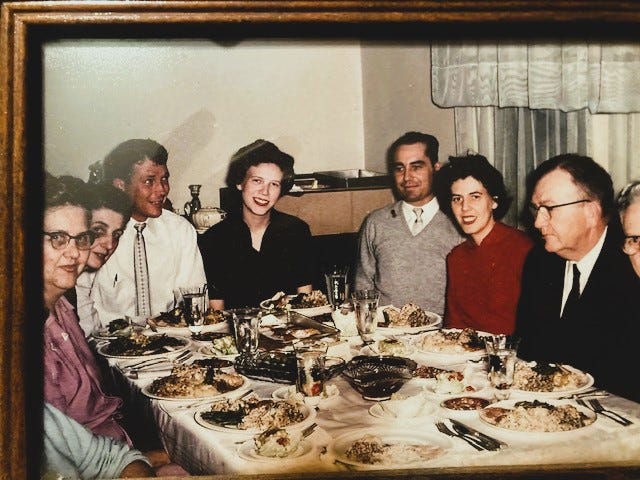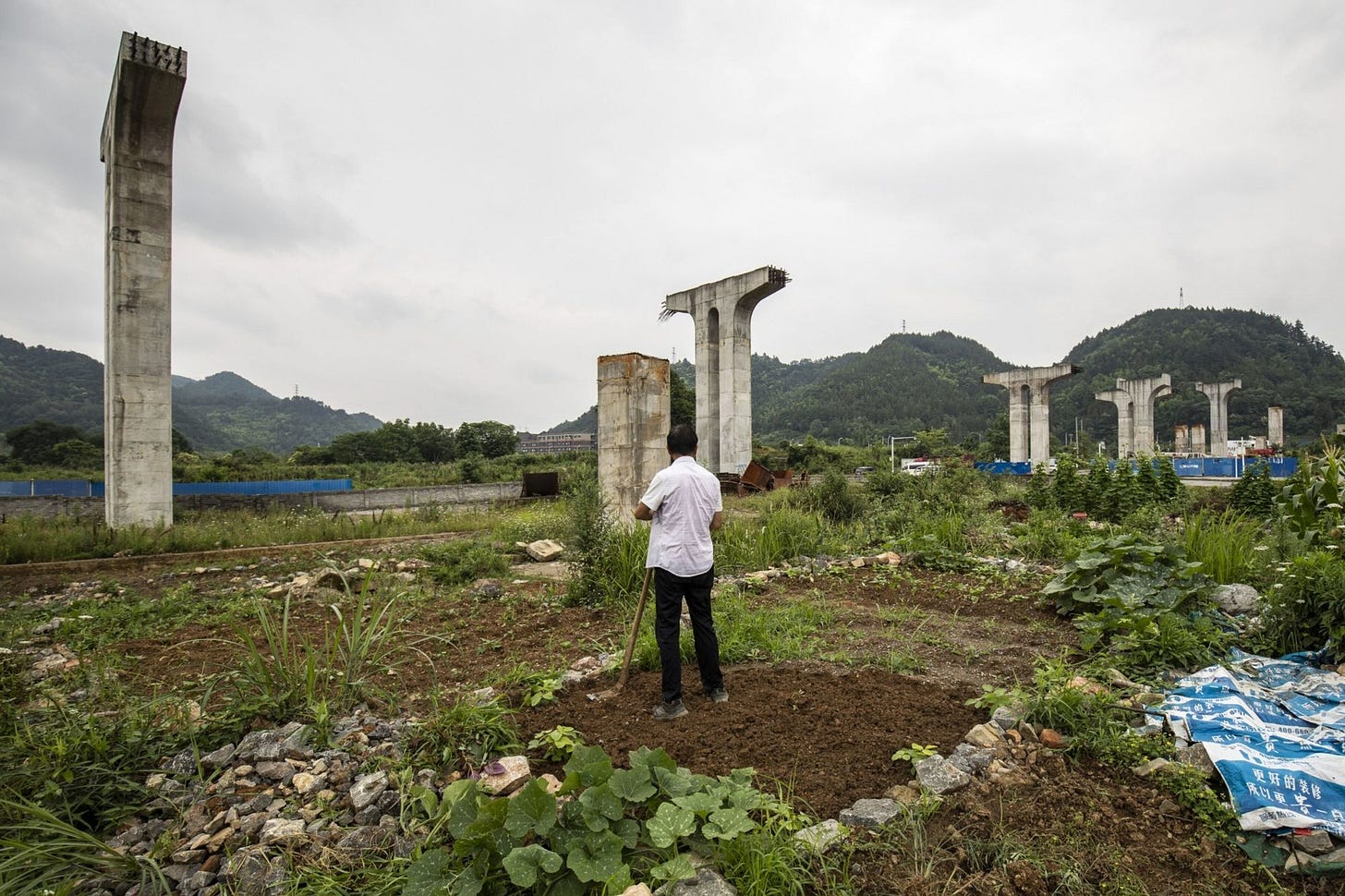What if Collapse Has Already Happened?
Popular culture has primed us to expect civilizational collapse. Endless movies and books depict with grim relish the various modes and methods by which our society has ground to an ignominious end. And then there is the cottage industry of serious history scholarship devoted to examining the tea leaves left behind in the broken crockery of dead empires and seeking the how, why, and exact when the cracks began, ultimately causing the teapot to shatter.
Consider playing this twist on a popular “what if” parlor game. The question to be posed: What if collapse has already happened and we are simply late for the party?
Each of us has a similar picture in our family archive. It’s the one of parents or grandparents, nicely dressed (and of modest weight), sitting at a dinner table. Or maybe it’s of a dapper young uncle standing at the entrance of a storefront on Main Street, a street of neat brick buildings fully occupied by local businesses selling actual needed goods. I cherish those pictures. I see in them those who gave me life, a place to belong, and an understanding within and of this land. Seeing them frozen in time helps me recall our world before the fall.
I often wonder what someone from, say, the late 1940s would think if he were dropped into the present in the same small town where he had grown up. The ugliness of today’s built environment, degradation of the farm land; the astounding physical changes to the inhabitants, insolent manners in the street, ubiquity of the slovenly dressed; the loss of local business—this overwhelmingly abysmal setting would surely cause its 1940s visitor to suspect that the world he had known had collapsed completely. He would, I believe, be correct.
Perhaps this was the mission of modernity all long (in any case, it was the inevitable result): to set in motion a plan to destroy our ability to find anything of beauty in the place where we live; to create in us a readiness, an eagerness, to leave Somewhere for Anywhere, move to Mars, or perhaps retreat inward, try on a new gender, upload our consciousness into a computer, LARP a “found” family. Is it any wonder that so many of us prefer the flickering screen to the strip-mall hell or home cluttered with the plastic, the unneeded, and the unwanted?
As our bewildered time traveler walks through his small town—past everything he formerly cherished that has now been paved over and repackaged with the unlovely, where all the churches have grown quiet on Sundays, down the roads in and out of town that are now filled with prefabricated buildings with a ten-year lifespan—should we be surprised that he can only conclude that a great calamity has occurred in the land?
For those of us left living in the debris of modernity, we do still have choices to make. We could make like Wile E. Coyote, feet churning past the edge, afraid to look down for fear of falling, and keep on running … for just a bit.
Or we could choose this path, whose sentiment is expressed by both Wendell Berry and in a poignant newspaper photograph. We could pursue Berry’s vision, that “we must achieve the character and acquire the skills to live much poorer than we do.” Or we could follow the lead of the man in China (below) who carefully tends a garden amidst the rubble of an abandoned overpass.
If our time traveler were in the position to advise, I believe he would say that the better path is in the “less is more,” the “less is abundance,” direction. And I would nod in agreement.
…………………………………………………………….
Reading: A Year in Provence (P. Mayle), Provence (Ford Madox Ford)



Already happened? Hardly. There's a long way down to the bottom of the trough, which might just be a universal grave. What we've experienced instead is a transformation on the way to collapse. To a sociologist with a longitudinal view, the American middle class and the nuclear family established just after WWII, from which many of us are sprung, are unrepeatable historical anomalies. Consider that slightly earlier pictures from the Depression, Dustbowl, and continuous waves of European immigrants to the U.S. tell a decidedly different story: one of undernourishment, poverty, and desperation. The Happy Days of the 50s to 70s turned out to be fleeting for all sorts of reasons. One can certainly wax nostalgic for those halcyon days, but they couldn't be sustained any more than the hyper- or postmodern early 21st century can be relied upon to deliver us safely into a welcoming future.
I had to blink when I looked at your picture, it looks so much like my family! But you are correct, the “modern “ world is full of ugliness and ugly people. I don’t know if we have collapsed already, but I yearn for the world of my childhood. I remember we had almost no plastic!! Imagine! I was born in 1953, I am not sure when plastic became so ubiquitous, but there was very little when I was a kid. Our sandwiches for school were put into waxed paper sandwich bags, or wrapped in a napkin. Our toys were metal or rubber or cloth. And it’s funny, my mother sewed all our clothes, even Daddy’s boxers!! But her sewing machine had exactly one stitch, forward straight stitch (and backwards). No zigzag, no embroidery stitches, like the fancy computerized sewing machine nowadays. Yet it lasted in good working order until she passed away at the age of 97. And she still sewed on it.
Well, I sound like a nostalgic old lady, don’t I?
Very interesting article, Brian, thank you.